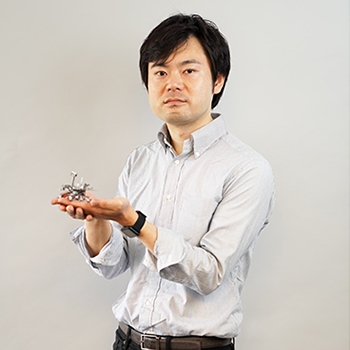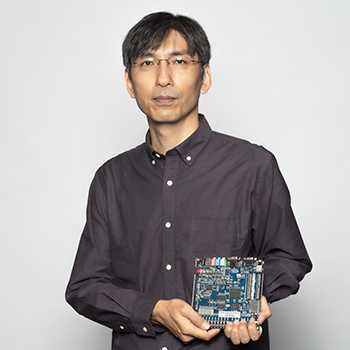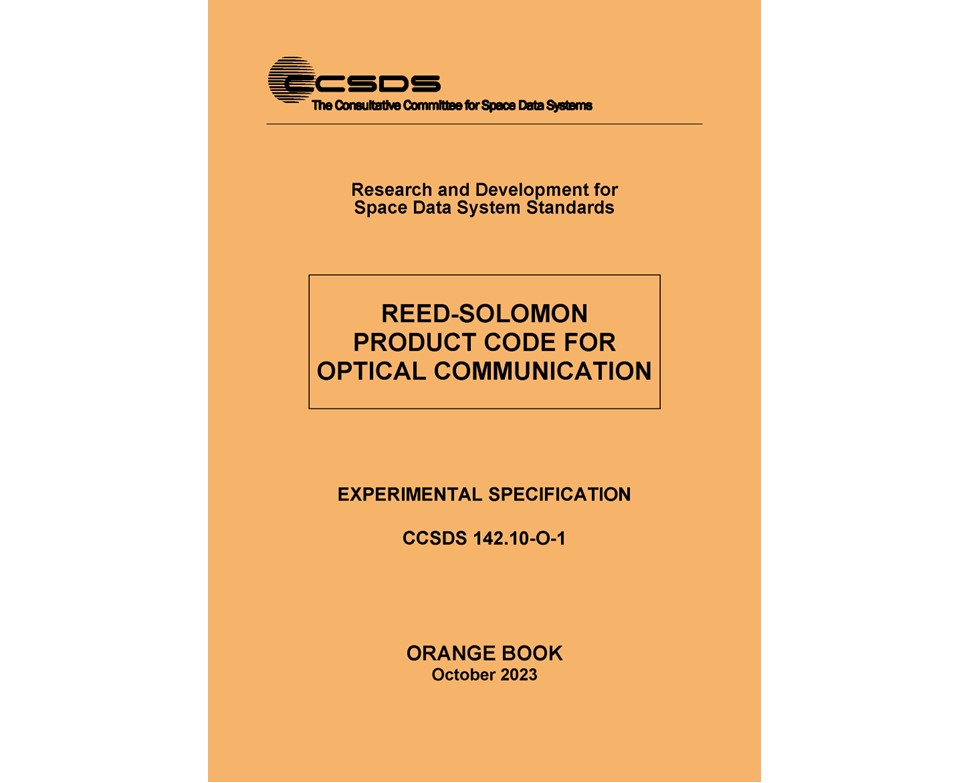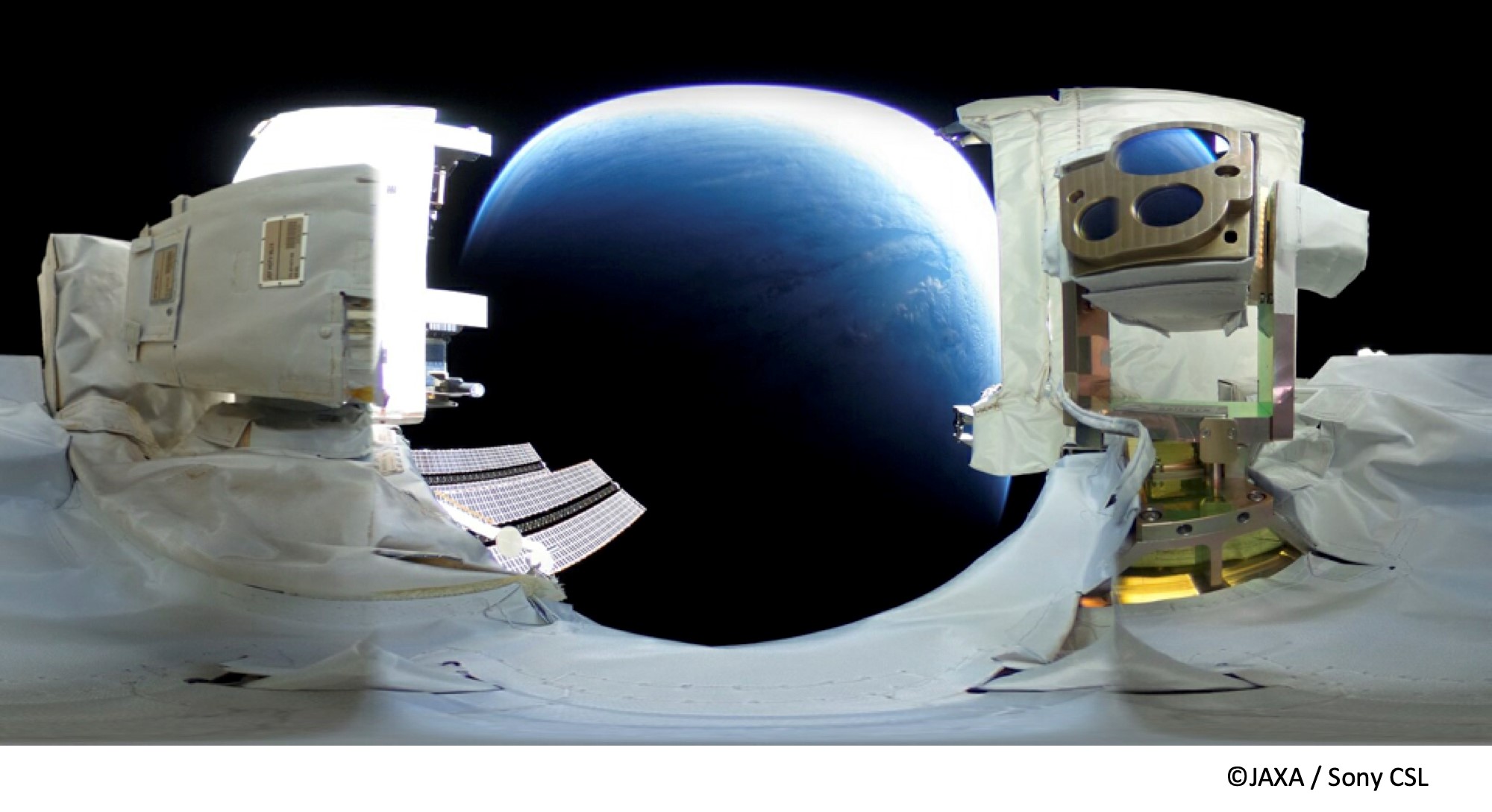SOL PJ.
Small Optical Link (SOL) Project
There are rising expectations for real-time satellite-to-ground links through inter-satellite communications, even in areas of the earth where the internet environment is not yet ready. Our daily lives would change dramatically as well, if small satellites could provide the same high-bandwidth communications as conventional large satellites.
The Small Optical Link Project (SOL Project) at Sony CSL is conducting R&D into an optical communications system that would be installed on small satellites to transmit large volumes of data over long distances. This system utilizes the optical disk technology that Sony has employed in household devices such as CD players. The goal of the project is to establish a real-time, mass-data communication system for future inter-satellite communications and communications with ground stations with this fine-pointing control technology.
In 2019, we confirmed that bidirectional communication between space (low earth orbit) and the ground can be achieved with our optical communication device called “SOLISS” on board the International Space Station. This joint research project with the Japan Aerospace Exploration Agency (JAXA) did not only confirm that the optical disc technology can be applied to space optical communications, but also that devices with existing technologies have the potential to increase possibilities of mass-producingoptical devices for space in the future.
The long-distance optical communications technology based on our research and development will help to create a society where all people have access to real-time information, and it could spur even great changes to our world in the future, allowing us to live in new places or carry out new activities in space.
Members of the SOL project team are continuing to study this technology, including quantum cryptographic communications, based on the technology developed for SOLISS, .
In 2022, a new company, Sony Space Communications Corporation (SSC), was established to carry out business on space optical communications.
SSC plans to develop small optical communications devices to provide services to connect micro satellites in LEO via a laser beam.
Also, SSC aims to promote the use of optical communications in space and to contribute to the improvement of convenience in peoples’ lives, including through the expansion of socioeconomic activities. You can read more about SSC in their website.
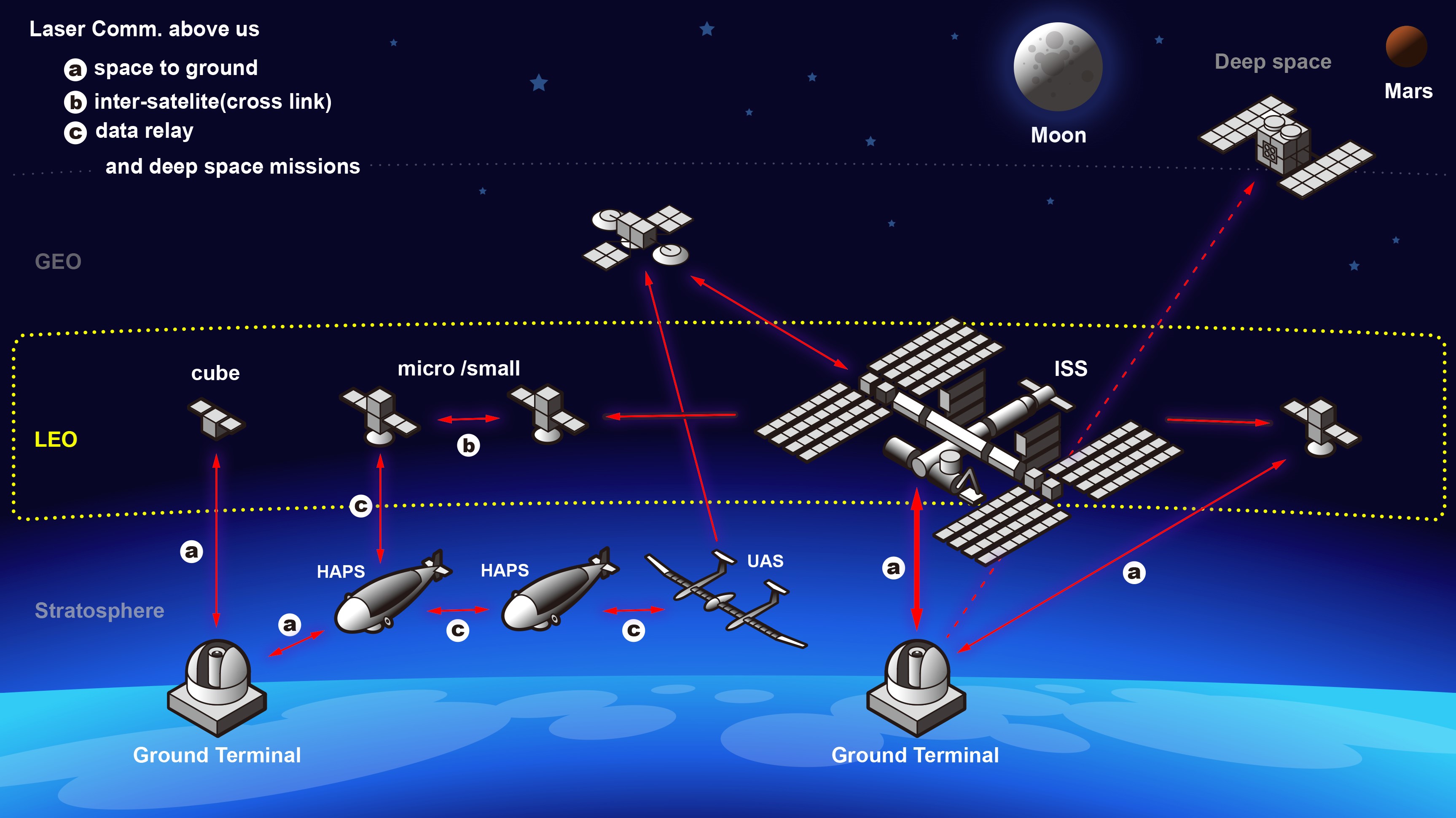
SOL Project concept
QSOL(Quantum-Small Optical Link)
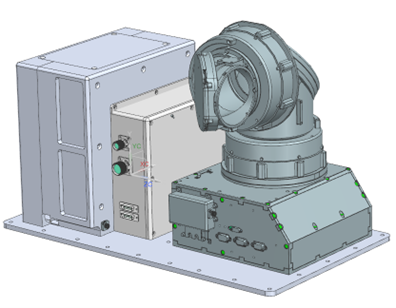
Structure of QSOL
QSOL (Quantum-Small Optical Link) is the optical antenna component of the compact Secure Laser Communications Terminal for Low Earth Orbit (SeCRETS). It was commissioned by the Ministry of Internal Affairs and Communications to demonstrate the technology in orbit and was jointly developed by National Institute of Information and Communications Technology (NICT), Next generation Space system Technology Research Association (NeSTRA), The University of Tokyo, SKY Perfect JSAT Corporation, and Sony CSL. SeCRETS was launched on August 2, 2023, to the ISS and installed to the IVA-replaceable Small Exposed Experiment Platform (i-SEEP) on the outside of “Kibo.” Subsequently, experiments of 10 GHz clock optical transmission between the ISS in low Earth orbit and a portable optical ground station were successfully conducted to share private keys and to demonstrate information-theoretically secure transmission of one-time pad encryption.1
For this experiment, QSOL’s compact periscope gimbal system tracked and acquired an uplink from NICT’s portable optical ground station and then downlinked to their 1.5 m optical ground station. An optical link was established, demonstrating the use of QSOL in orbit. Additionally, video data was downlinked from QSOL in orbit and received by NICT’s 1.5 m optical ground station.2 This transmission used the free-space optical Ethernet communications error-correction technology developed by Sony CSL.3
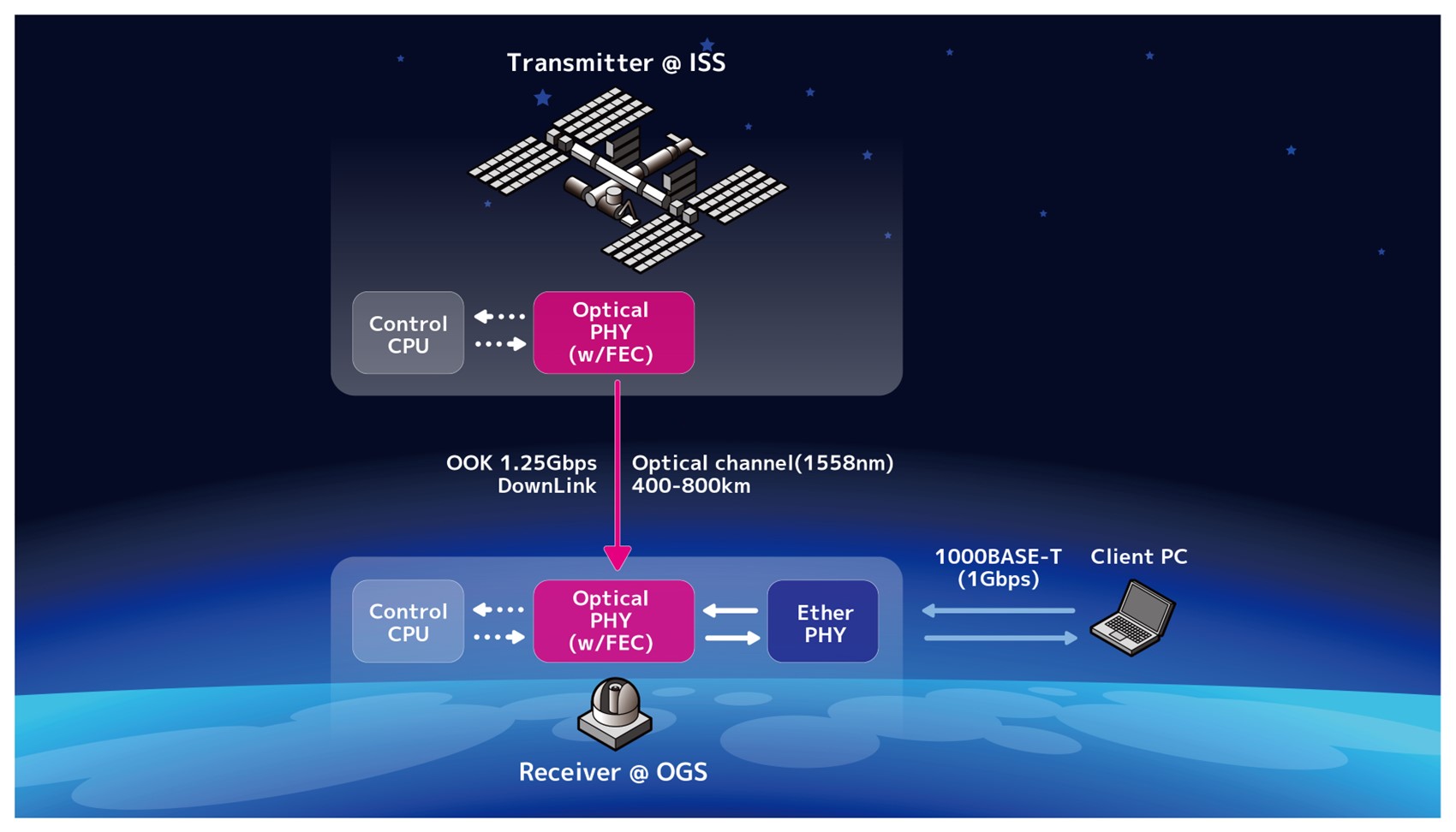
Conceptual diagram of the experiment
1 Successful private key sharing and high confidentiality communications between the International Space Station and the ground ~ Expectations for practical satellite quantum cryptography communications ~ https://www.sonycsl.co.jp/press/prs20240418/
(18 Apr 2024, press release, Japanese only)
2 NICT Optical Ground Station
A telescope facility built to aid the development of technology related to space communications. The station has a total of four telescopes with apertures of 1.5 m and 1.0 m in Koganei, Tokyo; 1.0 m in Kashima, Ibaraki; and 1.0 m in Onna, Kunigami-gun, Okinawa. The experiment this time used the telescope with a 1.5 m aperture.
2 142.10-O-1 Reed-Solomon Product Code for Optical Communication, an experimental specification (orange book) of the Consultative Committee for Space Data Systems (CCSDS).
Free-space optical Ethernet communications error-correction technology
■Overview
Free-space optical Ethernet communications error-correction technology developed by Sony Computer Science Laboratories, Inc. (Sony CSL) has been documented as an Experimental Specification (Orange Book) of the Consultative Committee for Space Data Systems (CCSDS).
CCSDS 142.10-O-1 REED-SOLOMON PRODUCT CODE FOR OPTICAL COMMUNICATION
https://public.ccsds.org/Pubs/142x10o1e1.pdf
This technology was proposed by the Sony CSL SOL project in the Optical Communications Working Group (SLS-OPT) of the Consultative Committee for Space Data Systems (CCSDS), an international standards organization, as part of Common Technical Document Working Group Committee Activities of the Japan Aerospace Exploration Agency (JAXA).
■Features
This technology documented as an Experimental Specification improves the error-correction mechanism of the Small Optical Link for International Space Station (SOLISS). It has the following features.
- Supports Ethernet-frame full-duplex communication
Ordinary Ethernet can be used as a Data Link Layer protocol by encapsulating the inner payload using Generic Framing Procedure (GFP) (ITU-T G.7041/Y.1303). As space development by private companies expands, the use of technology that is widely used on the ground instead of developing original protocols is beneficial from the viewpoint of improving compatibility and reducing development costs.
- Deals with degradation in communication quality caused by atmospheric fluctuations
In contrast to communication systems that use optical fiber as transmission paths, the degradation of communication quality due to atmospheric fluctuations must be considered in free-space optical communications between satellites and ground stations. Here, the received level of the signal light fluctuates causing burst errors to occur, but this technology achieved burst-error resistance by arranging Reed-Solomon code, which is robust to burst error by itself, in product code form and interchanging the order of sending and receiving signals by block interleaving. In addition, further improvement in correction performance can be expected by iterative correction using the product code structure and by erasure correction. Reed-Solomon product code also excels in efficient use of power in error correction making it a scheme applicable to mounting on small satellites.
Fluctuations in the received level of signal light can also affect the synchronization of received data. This technology is equipped with a synchronization protection mechanism based on SYNC markers designed so that synchronization can be stabilized even under such fluctuating conditions. It also enables the frequency components of the atmospheric fluctuations and communication signal to be separated by removing the low-frequency components of the communication signal. For low-speed communication signals, low-frequency components can be sufficiently removed using 8b10b code, and for high-speed signals, both low-frequency removal and code rate can be achieved by means of a frame synchronous scrambler.
- Optimization for communication channel characteristics
Burst error length fluctuates according to atmospheric conditions between satellites and ground stations. The number of interleaved blocks is variable length in this technology, so sufficient protection can be provided even under conditions in which long burst errors can occur. On the other hand, given that the communication channel between satellites can be treated as a vacuum, decreasing the number of interleaved blocks can reduce error-correction latency. In addition to the communication signal itself, this technology is equipped with a transmission area for meta-information called sub-data. This area can also be used for dynamically adjusting the number of interleaved blocks according to communication channel characteristics.
■Background
Irving S. Reed and Gustave Solomon of Massachusetts Institute of Technology’s Lincoln Laboratory developed Reed-Solomon code in 1960. It was first used as an actual communication system in the Voyager project in 1977 and subsequently became the standard coding system for NASA satellites and probes. In the 1980s, Sony and Philips adopted Reed-Solomon code in the compact disk (CD) standard for music playback, and it continues to be used in DVD and Blu-Ray Disk products.
Sony CSL focuses on the similarity between errors in optical discs caused by fingerprints, dust, scratches, etc. and errors in optical communications between satellites and ground stations caused by atmospheric fluctuations. It develops optical communication terminals that apply error-correction technologies researched and developed by the Sony Group. With this Experimental Specification, we expect this technology to be publically released as a standard through the CCSDS documentation process and not as a proprietary standard and to thereby improve interoperability in space optical communication. Looking to the future, Sony CSL will continue its research and development efforts toward the implementation of high-quality space communication systems.
■References
The Consultative Committee for Space Data Systems (CCSDS)
https://public.ccsds.org/default.aspx
JAXA CCSDS Office
https://stage.tksc.jaxa.jp/ccsds/index.html
CCSDS 142.10-O-1
https://public.ccsds.org/Pubs/142x10o1e1.pdf
8b10b
https://patents.google.com/patent/US4486739A/en
Generic Framing Procedure
https://www.itu.int/rec/T-REC-G.7041/
Small Optical Link for the International Space Station
(ISS: SOLISS)
The Small Optical Link for the International Space Station (SOLISS) is a joint project based on fundamental research conducted by Sony and the Japan Aerospace Exploration Agency (JAXA). It is a small-satellite optical link system developed jointly by Sony CSL and the JAXA Space Exploration Innovation Hub Center in order to conduct in-orbit demonstrations of the long-distance laser communication system.
On September 25, 2019, SOLISS was carried aboard the H-II Transfer Vehicle (HTV8) “KOUNOTORI-8”, the cargo transporter to the International Space Station (ISS). The system has been attached to the IVA-replaceable Small Exposed Experiment Platform (i-SEEP) hardware adapter installed on the Japanese Experiment Module (JEM) “Kibo”. The in-orbit optical communication experiments are underway.
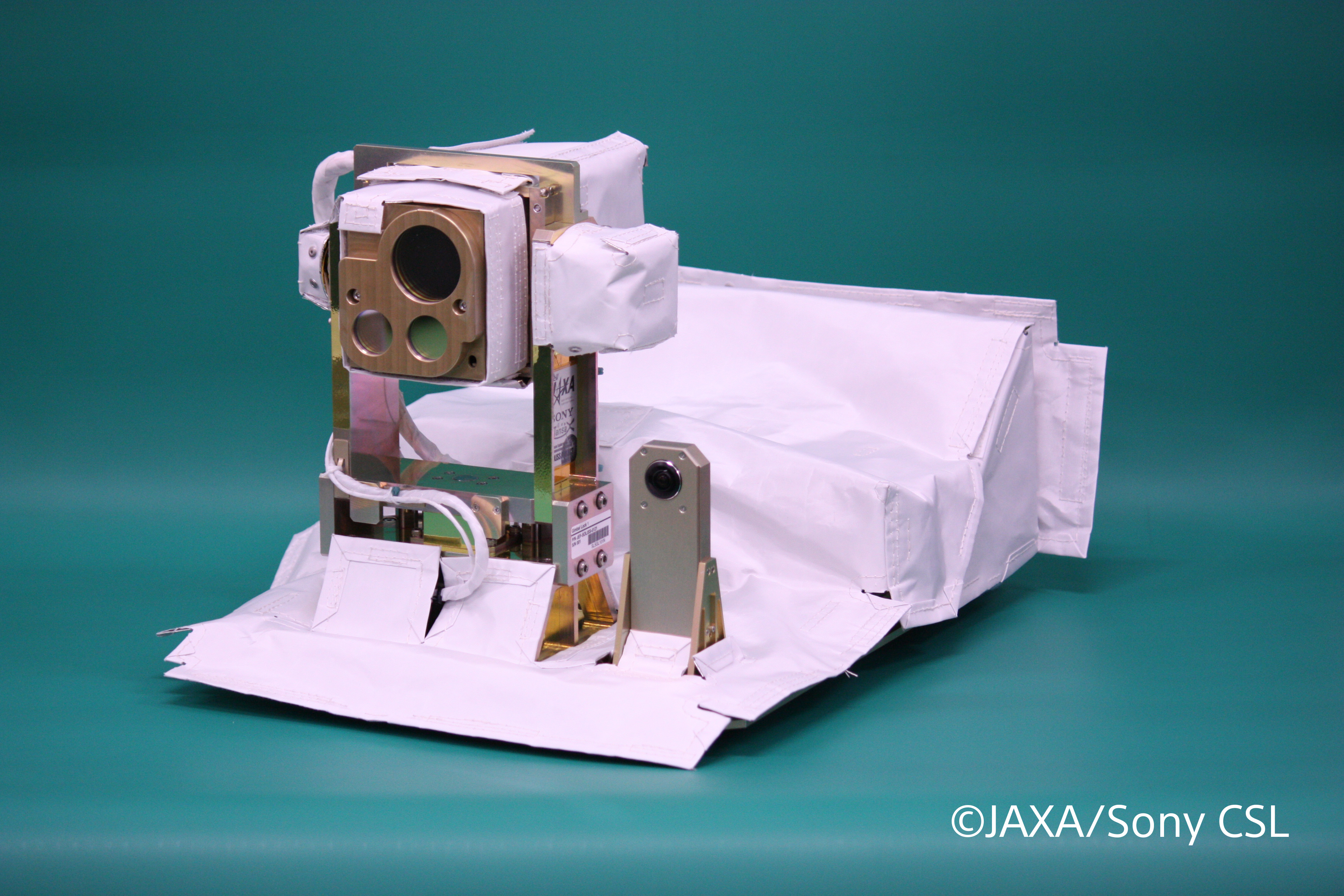 |
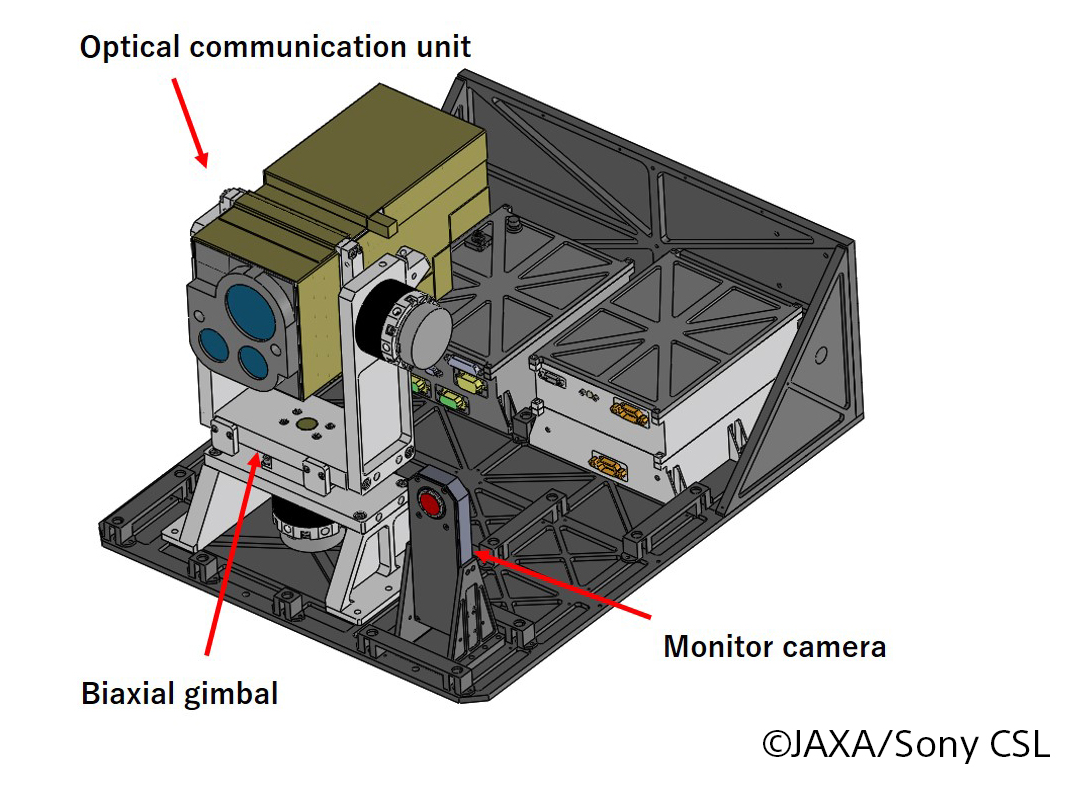 |
|
SOLISS system flight model
|
SOLISS system flight model overview
|
Image of the Earth taken from the monitor camera on SOLISS (sent to the ground via ISS)
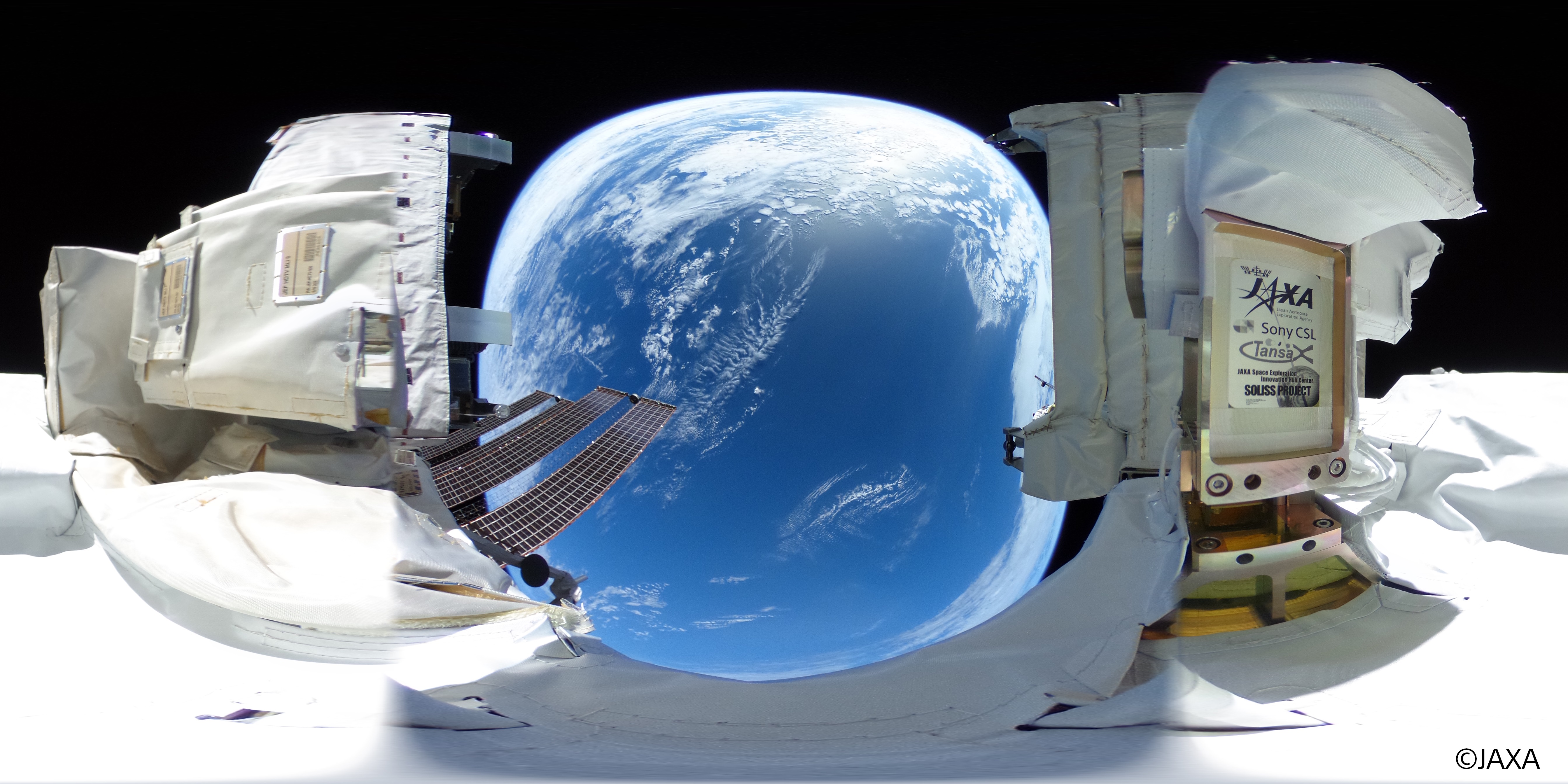
[Related Link]
JAXA Space Exploration Innovation Hub Center (360˚ Spherical Still and Video Images)
http://www.ihub-tansa.jaxa.jp/english/theta_photo_en.html


